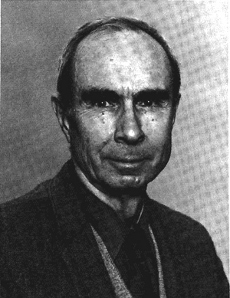Some Biogeographers, Evolutionists and Ecologists:
Chrono-Biographical Sketches
Darlington, Philip Jackson, Jr. (United
States 1904-1983)
entomology, zoogeography
 from gap.entclub.org |
Philip Darlington became one of the twentieth century's best known zoogeographers after initially forging a solid career as a specimen collector and taxonomist. His early field studies, focusing on insects (especially carabid beetles) took him to several tropical and subtropical environs, notably Colombia, Puerto Rico, Haiti, Cuba and New Guinea, but he also traveled to Australia and in later years, Tierra del Fuego. His detailed research in descriptive biology naturally led him to an involvement with biogeography, and the publication of two very well known titles on that subject: Zoogeography: The Geographical Distribution of Animals (1957), and Biogeography of the Southern End of the World (1965), as well as numerous shorter works. Heavily influenced by the writings of Alfred Russel Wallace and the dispersal-dominated ideas of George Gaylord Simpson, he took a dim view of the notion of continental drift until evidence emerging from the new plate tectonics-based theories of the 1960s changed his mind. Darlington was also a significant figure as an evolutionary biologist, conducting important studies on mimicry in beetles, flightlessness in island insects, and the Old World origins of vertebrate groups. |
Life Chronology
--born in Philadelphia, Pennsylvania, on 14 November 1904.
--1924, 1926, 1928: field expeditions to locations in the West Indies
--1926: B.A., Harvard University
--1927: M.S., Harvard
--1928-1929: entomological field study in Santa Marta, Colombia
--1931: completes Ph.D. at Harvard
--1931-1933: travels to Australia to study mammals
--1932-1940: assistant curator of insects, Museum of Comparative Zoology,
Harvard
--1934: climbs to the summit of Mount La Hotte in Haiti
--1938: publishes "The
Origin of the Fauna of the Greater Antilles, with Discussion of Dispersal
of Animals Over Water and Through the Air" in Quarterly Review
of Biology
--1940: made curator of Coleoptera at the Museum of Comparative Zoology
--1941-1944: during World War II serves in the Pacific in the Malaria
Survey division of the Army Sanitation Corps
--1943: publishes "Carabidae
of Mountains and Islands: Data on the Evolution of Isolated Faunas, and
on Atrophy of Wings" in Ecological Monographs
--1947, 1957: awarded Guggenheim fellowships
--1951: appointed curator of insects at the Museum of Comparative Zoology
--1956-1957: lives out of a truck in the Australian outback with his family
--1957: publishes his Zoogeography: The Geographical Distribution
of Animals; receives the Daniel Giraud Eliot Medal from the National
Academy of Sciences
--1962-1963: field trips to Tierra del Fuego
--1962-1971: Alexander Agassiz Professor of Zoology, Harvard
--1964: elected to the National Academy of Sciences and the American Academy
of Arts and Sciences
--1965: publishes his Biogeography of the Southern End of the World
--1980: publishes his Evolution for Naturalists: The Simple Principles
and Complex Reality
--dies at Cambridge, Massachusetts, on 16 December 1983.
For Additional Information, See:
--Biographical Memoirs, National Academy of Sciences (U.S.A.),
Vol. 60 (1991).
--American National Biography, Vol. 6 (1999).
--Taxonomy, Phylogeny and Zoogeography of Beetles and Ants (1985).
*
*
*
*
*
Copyright 2005 by Charles H. Smith. All rights
reserved.
http://people.wku.edu/charles.smith/chronob/DARL1904.htm
Return to Home/Alphabetical Listing by Name
Return to Listing by Country
Return to Listing by Discipline